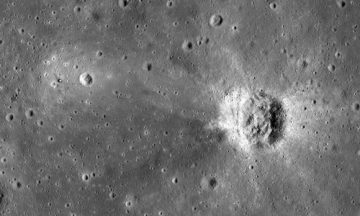Brad Jolliff and Mark Robinson in Physics Today:
 On 20 July 1969, Apollo 11 astronauts Neil Armstrong and Edwin “Buzz” Aldrin landed on the Moon while Michael Collins orbited in the command module Columbia. “Tranquility Base here. The Eagle has landed” became one of the most iconic statements of the Apollo experience and set the stage for five additional Apollo landings.
On 20 July 1969, Apollo 11 astronauts Neil Armstrong and Edwin “Buzz” Aldrin landed on the Moon while Michael Collins orbited in the command module Columbia. “Tranquility Base here. The Eagle has landed” became one of the most iconic statements of the Apollo experience and set the stage for five additional Apollo landings.
Each of the Apollo missions explored carefully selected landing sites and conducted a variety of experiments to probe the lunar interior and measure the solar wind. Well-trained astronauts made geologic observations and collected samples of rock and regolith, the impact-generated layer of debris that composes the lunar surface. Over a half century of study, the samples have revealed abundant information not only about the Moon’s origin and history but also about the workings of our solar system.
Results from the Apollo 11 mission established key paradigms of lunar and planetary science.
More here.
